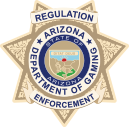Arizona has a rich history in Thoroughbred and Quarter Horse racing.
In 1954, Phoenix visionary Walter Cluer dreamed of building a world-class racing facility on 1400 acres of land he just purchased at 19th Avenue and Bell. That dream became a reality on January 7, 1956, when Turf Paradise opened its doors becoming one of Arizona’s first sports franchises. In 2000, Phoenix businessman, Jerry Simms, bought the track and built the track’s state-of-the-art equine swimming pool and continues to manage the facility today.
The track has been the winter home for thousands of horse owners, trainers and backstretch employees over the years and has been a staple of Thoroughbred and Quarter Horse racing in the Southwest.
In 1940, Rillito Park Race track was built on the grounds of the Rukin Jelks stud farm in the heart of Tucson, Arizona and has long been recognized as the birthplace of Quarter Horse racing. The initial track consisted of a 3/8th mile straightaway, which later became the model for the “chute system” used in modern day quarter horse racing. In 1954, Rillito added a 5/8ths mile oval and has since been the southern Arizona home of Thoroughbred and Quarter Horse racing. In 2012, Rillito Park Race Track was listed on the National Register of Historic Places.
In Yavapai County, Prescott Downs, a small 5/8th oval track in the heart of downtown Prescott, began racing in 1943. The racetrack was located on the famous rodeo grounds that hosted The World’s Oldest Rodeo, which was part of the Prescott Frontier Days. Over the years, summer racing became so popular that it eventually outgrew the small fairgrounds and in 2001 moved to the newly built Yavapai Downs Race track, a 120-acre facility located in Prescott Valley, Arizona. In 2011, the track closed its doors due to funding issues, but just recently was purchased by Phoenix-area investors who opened the facility in the summer of 2019 as Arizona Downs.
County fair racing began in 1949 when racing was conducted at the State Fairgrounds in Phoenix. In 1950, County Fair Racing expanded to Graham, Navajo, Pima and Yavapai counties in addition to racing at the State Fairgrounds.
A.R.S. § 5-111(e) states: “Any county fair racing association may apply to the commission for one racing meeting each year and the commission shall set the number of days and the dates of the meetings. A racing meeting conducted under this subsection shall be operated in such manner so that all profits accrue to the county fair racing association, and the county fair racing association may deduct from the pari-mutuel pool the same amount as prescribed in subsection C of this section.
All county fair racing meetings, whether conducted by county fair racing associations under this subsection or by an individual, corporation or association other than a county fair racing association, are exempt from the payment to the state of the percentage of the pari-mutuel pool prescribed by subsection D of this section and are also exempt from the provisions of section 5-111.01.”
In past years, many counties awarded race dates choose to run their dates at one of the two commercial race tracks in Arizona: Turf Paradise (Phoenix) and Rillito Park Race Track (Tucson). However, two Arizona counties run live horse racing at their county facilities: Santa Cruz County (Sonoita) and Cochise County (Douglas).
On Saturday, June 25, 2016, Tucson Greyhound Park (TGP) held its last official dog race after 72 years of racing. This marked the end of live greyhound racing in the state of Arizona.
In the 1970s, Arizona had more than five greyhound racetracks in what was known as “the racing circuit.” Thousands of people attended the nightly races in Yuma, Black Canyon City, Tucson, Phoenix and Apache Junction. Over the years, interest in greyhound racing waned and one by one the tracks closed. Tucson was the last operating greyhound track west of the Mississippi and its closure brought an end to an era.
For state officials, the biggest hurdle with TGP closing was the oversight and carefully monitoring for the departure of more than 400 dogs that called the south Tucson track home. This meant state personnel checking that haulers were properly licensed and every dog have a pre-exit vet exam and proper paperwork submitted. As the greyhounds departed, the buildings were inspected and closed off to ensure than no animal was accidently left behind. The difficult orchestration went smoothly, and in just over a week after live racing ended, the last kennel was inspected and closed by state employees on July 5, 2016.
However, the Division of Racing still has regulatory authority and oversight at the track since simulcasts of greyhound racing are still legal, and several Off-Track Betting locations are located throughout Tucson and Phoenix.
Timeline
Rillito Park Race Track, where formal quarter horse racing originated, opens for live horse racing in Tucson, Arizona.
The Arizona Legislature establishes the Arizona Racing Commission and legalizes pari-mutuel betting.
Turf Paradise Race Track opens for live horse racing in Phoenix, Arizona.
To protect public peace, safety and welfare and strengthen the Arizona Racing Commission’s oversight, the Arizona Legislature establishes the Arizona Department of Racing to regulate the racing industry in Arizona.
The Department of Racing expands its regulatory scope to include boxing and mixed martial arts.
Yavapai Downs Race Track opens for live horse racing in Prescott Valley, Arizona.
Yavapai Downs Race Track closes.
The Arizona Legislature consolidates the Arizona Department of Racing under the Arizona Department of Gaming, which conveys regulatory authority for live horse and dog racing, harness racing, pari-mutuel wagering, and boxing and mixed martial arts as of July 3, 2015.
In May, Governor Douglas Ducey signs legislation that outlaws the practice of dog racing in the State of Arizona.
Arizona Downs Race Track (formerly known as Yavapai Downs) opens for live horse racing in Prescott Valley, Arizona.
Legislation signed by Governor Doug Ducey legalized online pari-mutuel wagering for horse racing.



